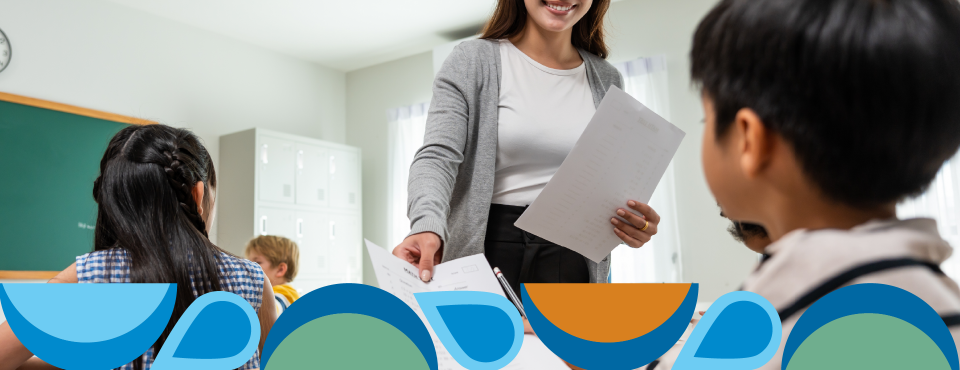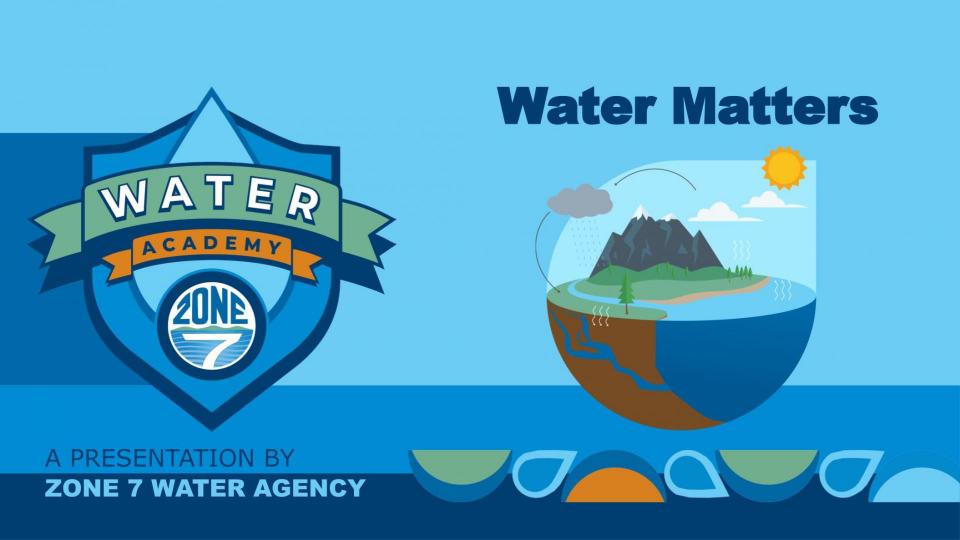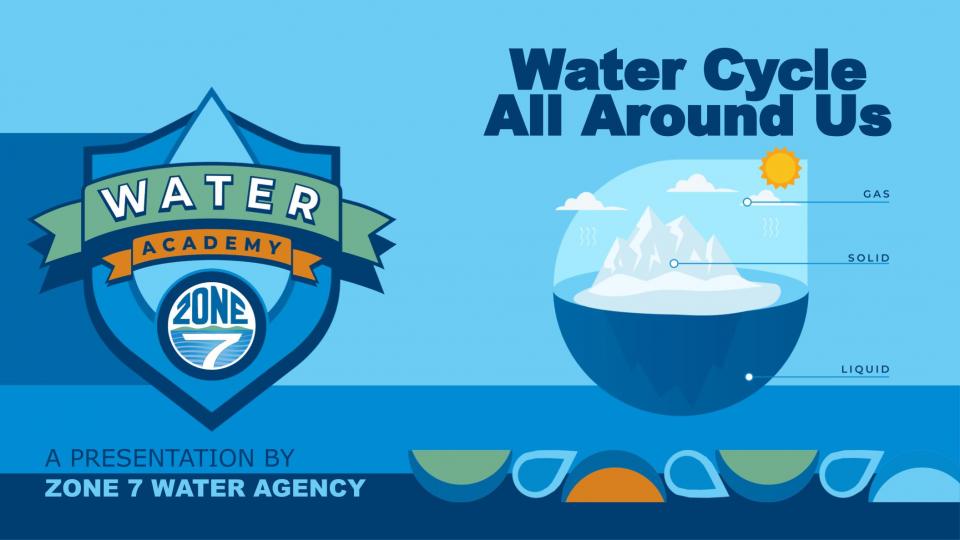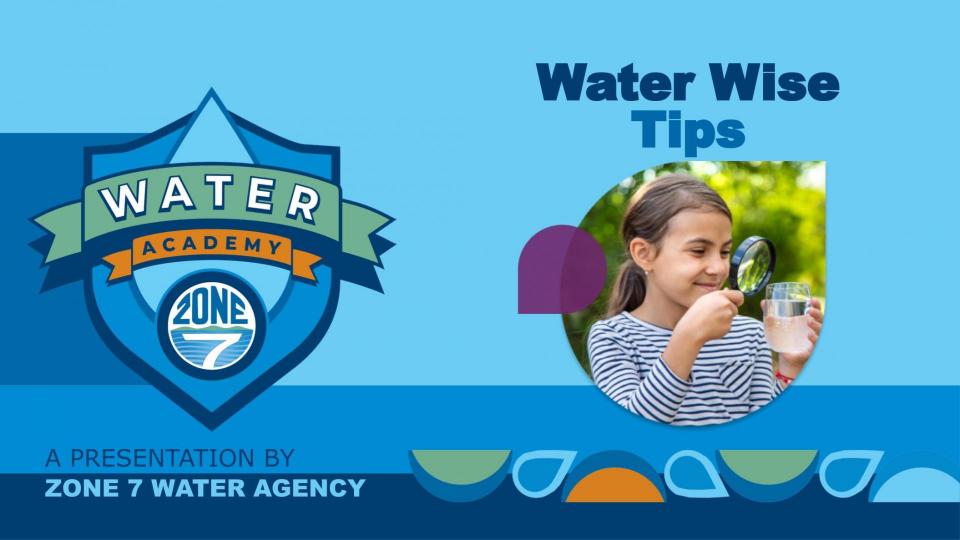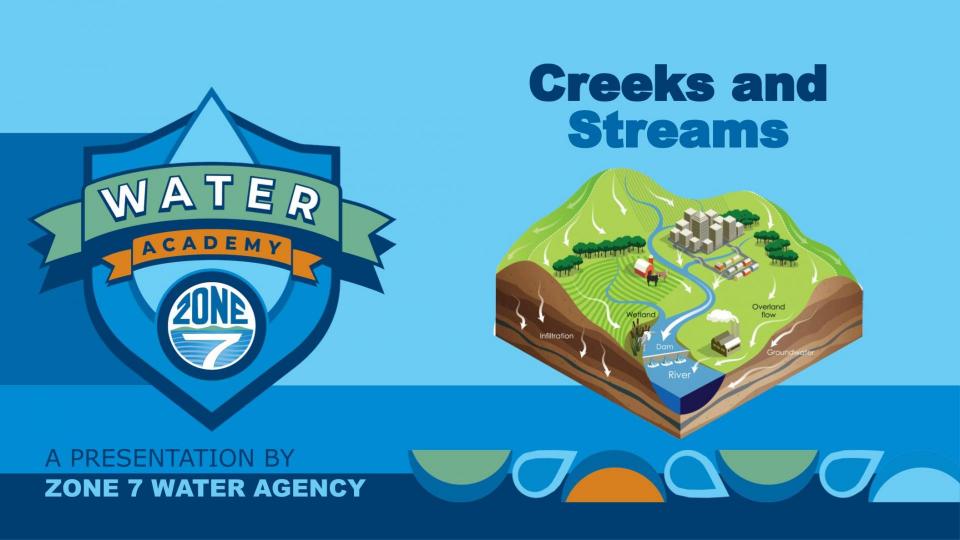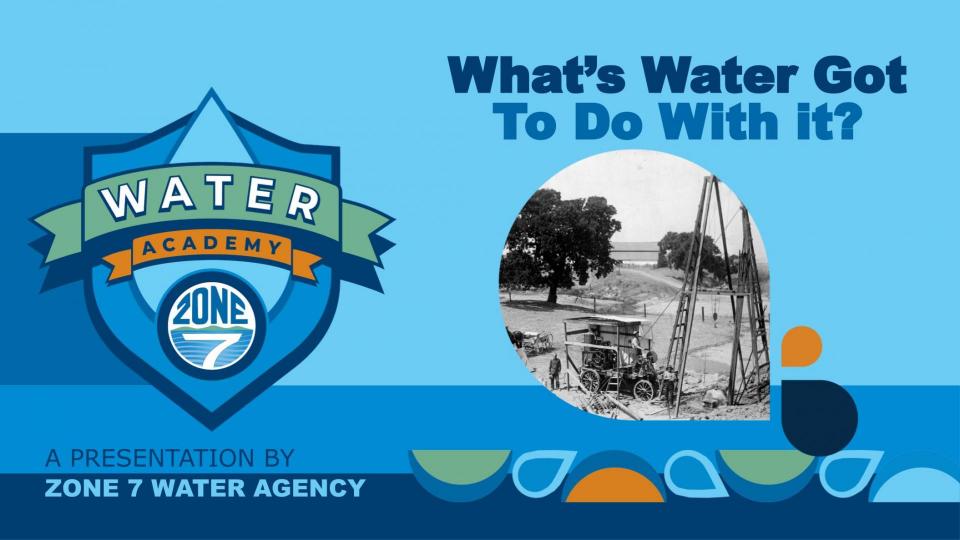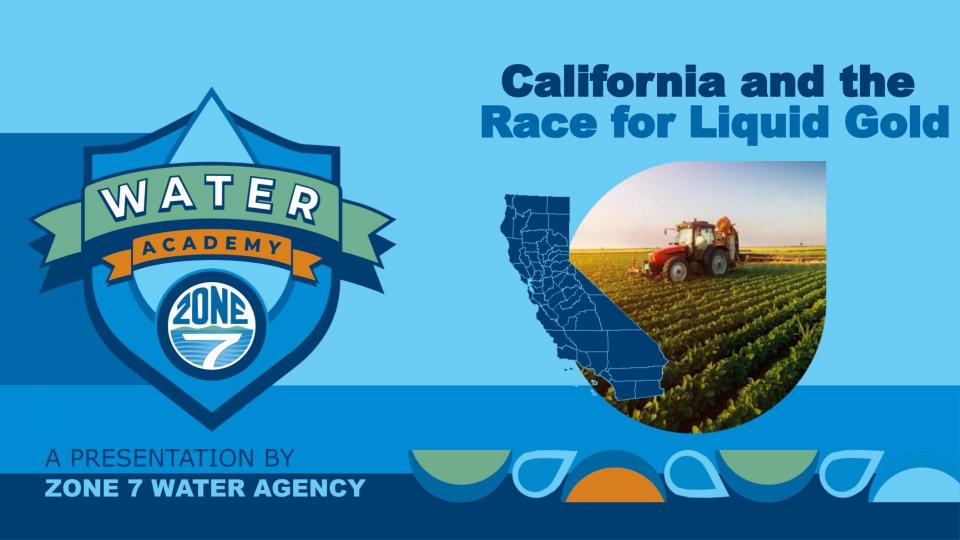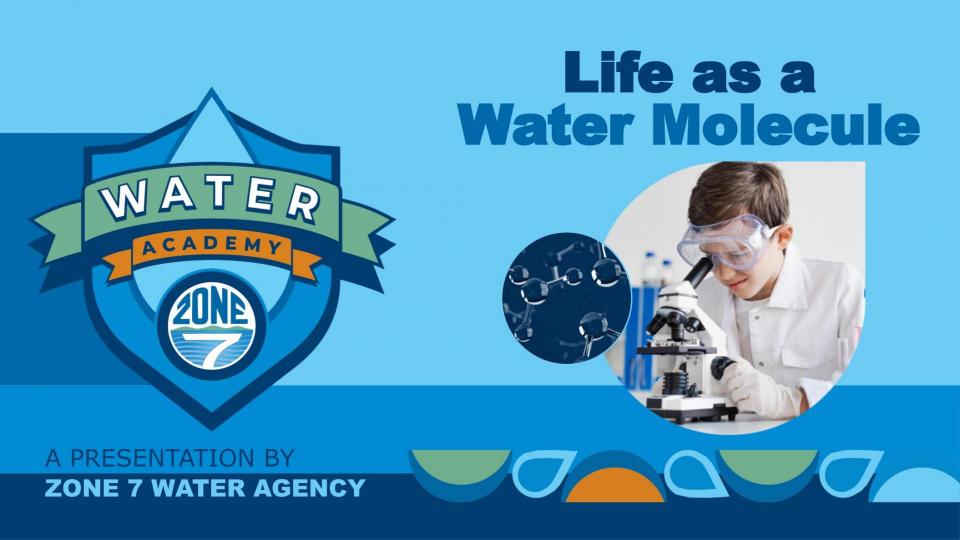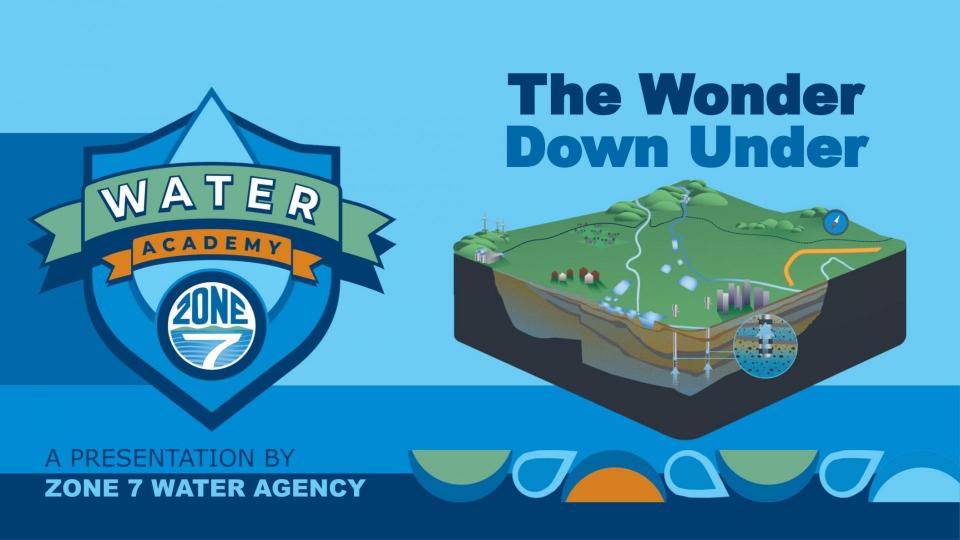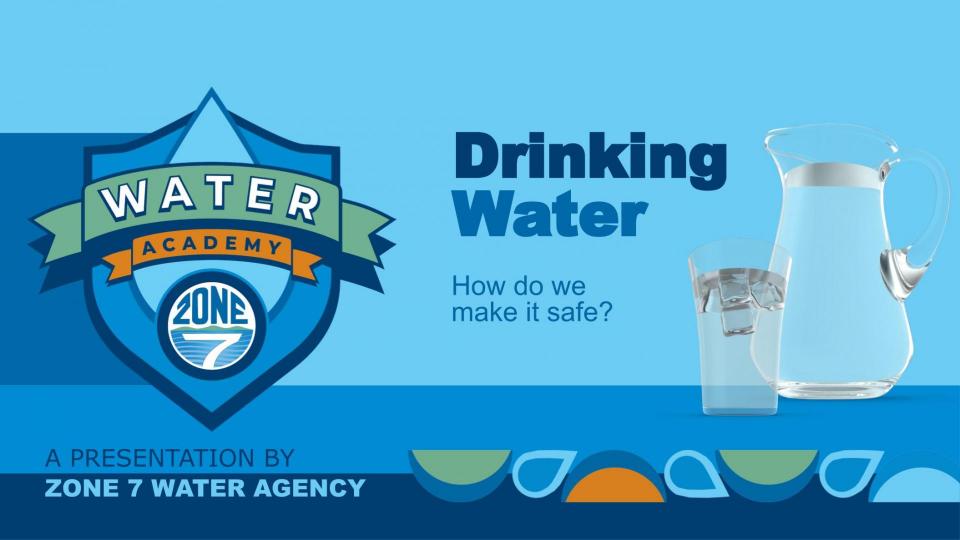Water Academy Standards
All Zone 7 Water Academy lessons are aligned with the California State Next Generation Science Standards for K-12 content. Please find summaries and objectives for each grade-specific water-focused lesson below, along with the curriculum connection and the state standards covered in each lesson.
Grade Level: Transitional Kindergarten | Water Matters
Curriculum Connections: Science
Summary:
During the 30-minute presentation, students will understand how the water cycle uses all forms of water. They will learn a song about how water can be a solid, liquid and gas, see water change forms, and hear a story about why it’s important to save water. The lesson is interactive, fun, age-appropriate and informative.
Objectives:
- Describe the movement of water within the water cycle.
- Identify how water changes form from a liquid to a solid to vapor.
- Familiarize students with the importance of water on our planet.
- Introduce students to conservation ideas they can practice at home.
California State Standards Covered:
- HSS-K.4.2 Students compare and contrast the locations of people, places, and environments and describe their characteristics.
- Distinguish between land and water on maps and globes and locate general areas referenced in historical legends and stories.
- K.1 Students understand that being a good citizen involves acting in certain ways.
- Follow rules, such as sharing and taking turns, and know the consequences of breaking them.
- K-LS1-1. Use observations to describe patterns of what plants and animals (including humans) need to survive.
- ESS2.D: Weather and Climate
- Weather is the combination of sunlight, wind, snow or rain, and temperature in a particular region at a particular time.
- ESS3.C: Human Impacts on Earth Systems
- Things that people do to live comfortably can affect the world around them. But they can make choices that reduce their impacts on the land, water, air, and other living things.
- ESS3.A: Natural Resources
- Living things need water, air, and resources from the land, and they live in places that have the things they need. Humans use natural resources for everything they do.
- K-PS3-1. Make observations to determine the effect of sunlight on Earth’s surface.
- [Clarification Statement: Examples of Earth’s surface could include sand, soil, rocks, and water]
- PS3.B: Conservation of Energy and Energy Transfer
- Sunlight warms Earth’s surface.
Grade Level: Kindergarten | Water cycle All Around Us
Curriculum Connections: Science
Summary:
During the 45-minute presentation, students will learn about the water cycle through discussion, movement and building a model to take home. Students begin the lesson by reviewing the three states of matter presented to them. Then it’s time to stand up and move through the changes water goes through in the water cycle! After being introduced to the “water cycle map,” students will make their own water cycle in a bag to take home, tape on the window and watch the process every day.
Objectives:
- Begin to understand the necessity of water to every living being.
- Identify how water changes form from a liquid to a solid to vapor.
- Describe the movement of water within the water cycle.
- Build a model to demonstrate the water cycle.
- Introduce students to conservation ideas they can practice at home.
California State Standards Covered:
- K-LS1-1 From Molecules to Organisms: Structures and Processes
- Use observations to describe patterns of what plants and animals (including humans) need to survive.
- K-ESS2-1 Earth’s Systems
- Use and share observations of local weather conditions to describe patterns over time.
- ESS2.D: Weather and Climate
- Weather is the combination of sunlight, wind, snow or rain, and temperature in a particular region at a particular time. People measure these conditions to describe and record the weather and to notice patterns over time.
- K-ESS3-1 Earth and Human Activity
- Use a model to represent the relationship between the needs of different plants and animals (including humans) and the places they live.
- K-2-ETS1-2 Engineering Design
- Develop a simple sketch, drawing, or physical model to illustrate how the shape of an object helps it function as needed to solve a given problem.
- K-PS3-1. Make observations to determine the effect of sunlight on Earth’s surface.
- [Clarification Statement: Examples of Earth’s surface could include sand, soil, rocks, and water] [Assessment Boundary: Assessment of temperature is limited to relative measures such as warmer/cooler.]
- PS3.B: Conservation of Energy and Energy Transfer
- Sunlight warms Earth’s surface.
Grade Level: 1 | Water Wise Tips
Curriculum Connections: Science
Summary:
During the 45-minute presentation, students will understand water on our earth, the water cycle, and the importance of using water wisely. They will learn a song about the water cycle and sneak in a review about creating patterns and the three states of matter. After some interactive time at the carpet, students will work at their desks to create a conservation wheel. They can then share this with their families, promoting a timely conversation about conservation.
Objectives:
- To review the water cycle.
- To identify ways to conserve water.
- To identify reasons we need to conserve water.
- To describe the effects of wasting water.
California State Standards Covered:
Next Gen Science Standards:
- 1.2 Students compare and contrast the absolute and relative locations of places and people and describe the physical and/or human characteristics of places.
- Locate on maps and globes their local community, California, the United States, the seven continents, and the four oceans
- 1.2 4. Describe how location, weather, and physical environment affect the way people live, including the effects on their food, clothing, shelter, transportation, and recreation.
- Hist./Soc. Science:
- K–2-ETS1-1. Ask questions, make observations, and gather information about a situation people want to change to define a simple problem that can be solved through the development of a new or improved object or tool.
Grade Level: 2 | Creeks & Streams
Curriculum Connections: Science
Summary:
During the 45-minute presentation, students will review map skills by using a custom-made map of the Upper Alameda Creek Watershed. The students will follow along coloring all the water systems in our valley as they practice following a variety of instructions. Once the students have an excellent understanding of arroyos, they will discuss the effects of trash on the creek ecosystems. “Everything leads to the bay.”
Objectives:
- To define a watershed.
- To begin to understand our local watershed.
- Practice map skills.
- To define the difference between a stormdrain and a sewer drain.
- To describe the effects of pollution on creek wildlife and water quality.
- To detail pollution prevention options.
California State Standards Covered:
Hist./Soc. Science:
- 2.2 Students demonstrate map skills by describing the absolute and relative locations of people, places, and environments.
- Locate on a simple letter-number grid system the specific locations and geographic features in their neighborhood or community (e.g., map of the classroom, the school).
- Label from memory a simple map of the North American continent, including the countries, oceans, Great Lakes, major rivers, and mountain ranges. Identify the essential map elements: title, legend, directional indicator, scale, and date.
- 4. Compare and contrast basic land use in urban, suburban, and rural environments in California.
Next Gen Science Standards:
- LS2.A: Interdependent Relationships in Ecosystems
- Plants depend on water and light to grow.
- LS4.D: Biodiversity and Humans
- There are many different kinds of living things in any area, and they exist in different places on land and in water.
- 2-ESS2-2. Develop a model to represent the shapes and kinds of land and bodies of water in an area.
- [Assessment Boundary: Assessment does not include quantitative scaling in models.]
- 2-ESS2-3. Obtain information to identify where water is found on Earth and that it can be solid or liquid.
- ESS2.C: The Roles of Water in Earth’s Surface Processes
- Water is found in the ocean, rivers, lakes, and ponds. Water exists as solid ice and in liquid form.
Grade Level: 3 | The People and Events of our Watershed
Curriculum Connections: Science and History
Summary:
During the 45-minute presentation, students work through a timeline and cover more than 240 years of history in our valley as we ask the question “what does water have to do with history?” As students learn about many of the people and events of the Upper Alameda Creek Watershed, they will get to see historic photos to help them imagine a time when there were no buildings, and there was no easy access to water. This lesson is best taught while local history is being taught.
Objectives:
- Students will learn about the important role that water played in the settlement of the Livermore-Amador Valley.
- Students will actively build a timeline to understand a sequence of events.
- Students will work together cooperatively to achieve a stated outcome.
California State Standards Covered:
ELA:
- Range of Reading and Level of Text Complexity:
- 10. By the end of the year, read and comprehend informational texts, including history/social studies, science, and technical texts, at the high end of the grades 2–3 text complexity and independently and proficiently.
Next Gen Science Standards:
- 3-ESS2-1. Represent data in tables and graphical displays to describe typical weather conditions expected during a particular season.
History
- 3.1 Students describe the physical and human geography and use maps, tables, graphs, photographs, and charts to organize information about people, places, and environments in a spatial context.
- Identify geographical features in their local region (e.g., deserts, mountains, valleys, hills, coastal areas, oceans, lakes).
- Trace the ways in which people have used the resources of the local region and modified the physical environment (e.g., a dam constructed upstream changed a river or coastline).
- 3.3 Students draw from historical and community resources to organize the sequence of local historical events and describe how each period of settlement left its mark on the land.
- Research the explorers who visited here, the newcomers who settled here, and the people who continue to come to the region, including their cultural and religious traditions and contributions.
- Describe the economies established by settlers and their influence on the present-day economy, with emphasis on the importance of private property and entrepreneurship.
- Trace why their community was established, how individuals and families contributed to its founding and development, and how the community has changed over time, drawing on maps, photographs, oral histories, letters, newspapers, and other primary sources.
Grade Level: 4 | California & The Race for Liquid Gold
Curriculum Connections: History/Social Science, Earth Science
Summary:
During the 45-minute presentation, students identify how water affects every aspect of our past and present lives here in California. Watching a short historic video helps students see images of the building of many of California’s waterways. Through discussion, they will see how vital these systems are to our state. Finally, playing a game helps students identify the various water users throughout California, bringing us to the question of whether or not one “water user” is more important than another.
Objectives:
- Students will understand the historical/political context of water in CA.
- Students will understand the importance of water as a natural resource.
- Students will identify roles of various water users throughout our state.
California State Standards Covered:
History/Social Science
- 4.1 Students demonstrate an understanding of the physical and human geographic features that define places and regions in California.
- 3. Identify the state capital and describe the various regions of California, including how their characteristics and physical environments (e.g., water, landforms, vegetation, climate) affect human activity.
- 4. Identify the locations of the Pacific Ocean, rivers, valleys, and mountain passes and explain their effects on the growth of towns.
- 5. Use maps, charts, and pictures to describe how communities in California vary in land use, vegetation, wildlife, climate, population density, architecture, services, and transportation.
- 4.4 Students explain how California became an agricultural and industrial power, tracing the transformation of the California economy and its political and cultural development since the 1850s.
- 7. Trace the evolution of California’s water system into a network of dams, aqueducts, and reservoirs.
Next Gen Science
- 4-ESS2-2. Analyze and interpret data from maps to describe patterns of Earth’s features.
Grade Level: 5 | Life as a Water Molecule
Curriculum Connections: Science
Summary:
During this 60-minute lesson, students will experience the water cycle as more than a predictable two dimensional path through a fun, experiential role-playing activity. The groundwork will be laid by using props, posters, and simulation to review some basics about water on earth and in our watershed. Students will then morph into water molecules and journey through the states of matter and the water cycle, rolling the die at each station to discover where to go next. Along the way, they collect evidence of their journey with colored beads that create a decorative accessory, perfect for prompting writing and retelling of their “Life as a Water Molecule”. The lesson concludes with sharing data on our journeys and analyzing the outcomes.
Making Connections:
Role-playing a water molecule helps students to conceptualize the water cycle as more than a predictable two-dimensional path.
Objectives:
- Describe the movement of water within the water cycle.
- Identify the states of water as it moves through the water cycle.
California State Standards Covered:
- 5-LS1-1. Support an argument that plants get the materials they need for growth chiefly from air and water.
- [Clarification Statement: Emphasis is on the idea that plant matter comes mostly from air and water, not from the soil.]
- 5-LS2-1. Develop a model to describe the movement of matter among plants, animals, decomposers, and the environment.
- [Clarification Statement: Emphasis is on the idea that matter that is not food (air, water, decomposed materials in soil) is changed by plants into matter that is food.
- LS2.B. Cycles of Matter and Energy Transfer in Ecosystems
- Matter cycles between the air and soil and among plants, animals, and microbes as these organisms live and die. Organisms obtain gases, and water, from the environment, and release waste matter (gas, liquid, or solid) back into the environment. (5-LS2-1)
- 5-ESS2-2. Describe and graph the amounts and percentages of water and fresh water in various reservoirs to provide evidence about the distribution of water on Earth.
- [Assessment Boundary: Assessment is limited to oceans, lakes, rivers, glaciers, ground water, and polar ice caps, and does not include the atmosphere.]
- 5-ESS3-1. Obtain and combine information about ways individual communities use science ideas to protect the Earth’s resources and environment.
- 5-PS1 Develop a model to describe that matter is made of particles too small to be seen.
- 5-PS2-1 Support an argument that the gravitational force exerted by Earth on objects is directed down.
- [Clarification Statement: “Down” is a local description of the direction that points toward the center of the spherical Earth.]
Grade Level: 6 – 8 | The Wonder Down Under
Curriculum Connections: Science
Summary:
An exploration of the local watershed, how groundwater and surface water systems are connected and what water underground looks like throughout the state. Using a PowerPoint presentation and maps, students explore the geography of the aquifers of our state and valley. Factors that affect them, such as drought, rainfall, pumping, soils, and development are examined. Through the use of models, students will observe the percolation process and its relation to different sediments and grain size. The class will gather round our custom California state groundwater model to watch as different scenarios are employed to show their effect on groundwater across our state, from mountains to coast.
Making Connections:
Students learn how and where groundwater moves and is stored, how climate and land use affect groundwater supplies, how it is used in our local watershed, and what policies are in place to manage and protect groundwater.
Objectives:
- Students can describe the important role of groundwater.
- Students can identify the challenges to maintaining a clean, safe groundwater supply.
California State Standards Covered:
- MS-ESS2 Earth’s Systems
- MS-ESS2-4. Develop a model to describe the cycling of water through Earth’s systems driven by energy from the sun and the force of gravity.
- ESS2.C: The Roles of Water in Earth’s Surface Processes
- Water continually cycles among land, ocean, and atmosphere via transpiration, evaporation, condensation and crystallization, and precipitation, as well as downhill flows on land.
- The complex patterns of the changes and the movement of water in the atmosphere, determined by winds, landforms, and ocean temperatures and currents, are major determinants of local weather patterns.
- Global movements of water and its changes in form are propelled by sunlight and gravity.
- Water’s movements—both on the land and underground—cause weathering and erosion, which change the land’s surface features and create underground formations, including groundwater basins.
- MS-ESS3 Earth and Human Activity
- MS-ESS3-3. Apply scientific principles to design a method for monitoring and minimizing a human impact on the environment. *
- ESS3.A: Natural Resources
- Humans depend on Earth’s land, ocean, atmosphere, and biosphere for many different resources. Minerals, fresh water, and biosphere resources are limited, and many are not renewable or replaceable over human lifetimes. These resources are distributed unevenly around the planet as a result of past geologic processes.
Grade Level: 6-8 | Drinking Water Treatment: How we make it safe
Curriculum Connections: Science
Summary:
Students examine our valley’s sources of water along with where and how raw water is treated to make it safe to drink. Using student-led demonstrations, PowerPoint, and video clips, the basic chemistry behind the water treatment process is brought to life for the students. Students will work in groups to create their own filtration models. Using the engineering design process they will determine which materials to use and then test their filter, gauging its effectiveness.
Objectives:
- Explore drinking water treatment on a personal and municipal level.
- Review the hydrological cycle and how it naturally purifies water.
- Identify the sources of drinking water for the Tri-Valley.
- To learn about the process of treating water to make it potable.
California State Standards Covered:
- ESS2.C: The Roles of Water in Earth’s Surface Processes
- Water continually cycles among land, ocean, and atmosphere via transpiration, evaporation, condensation and crystallization, and precipitation, as well as downhill flows on land.
- The complex patterns of the changes and the movement of water in the atmosphere, determined by winds, landforms, and ocean temperatures and currents, are major determinants of local weather patterns.
- Global movements of water and its changes in form are propelled by sunlight and gravity.
- Variations in density due to variations in temperature and salinity drive a global pattern of interconnected ocean currents.
- ESS2.D: Weather and Climate
- Weather and climate are influenced by interactions involving sunlight, the ocean, the atmosphere, ice, landforms, and living things. These interactions vary with latitude, altitude, and local and regional geography, all of which can affect oceanic and atmospheric flow patterns.
- Because these patterns are so complex, weather can only be predicted probabilistically.
- The ocean exerts a major influence on weather and climate by absorbing energy from the sun, releasing it over time, and globally redistributing it through ocean currents.
- ESS3.A: Natural Resources
- Humans depend on Earth’s land, ocean, atmosphere, and biosphere for many different resources. Minerals, fresh water, and biosphere resources are limited, and many are not renewable or replaceable over human lifetimes. These resources are distributed unevenly around the planet as a result of past geologic processes.
- MS-ESS3 Earth and Human Activity Apply scientific principles to design a method for monitoring and minimizing a human impact on the environment.

